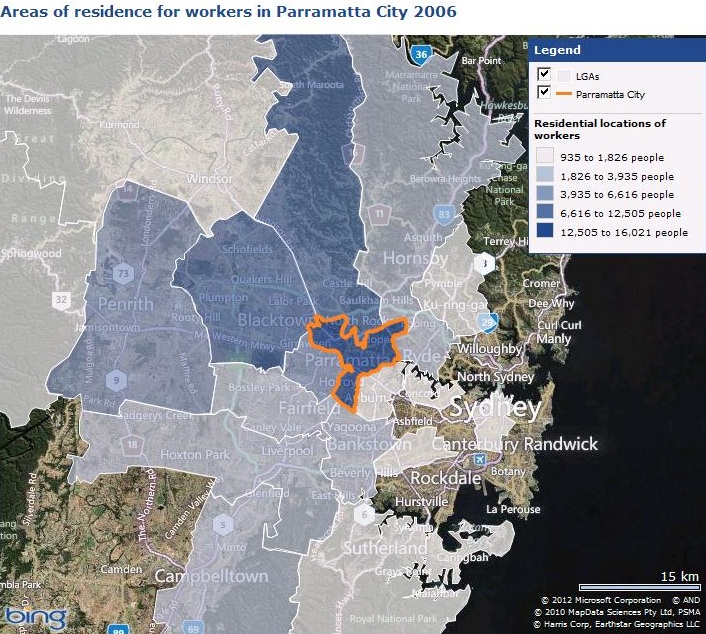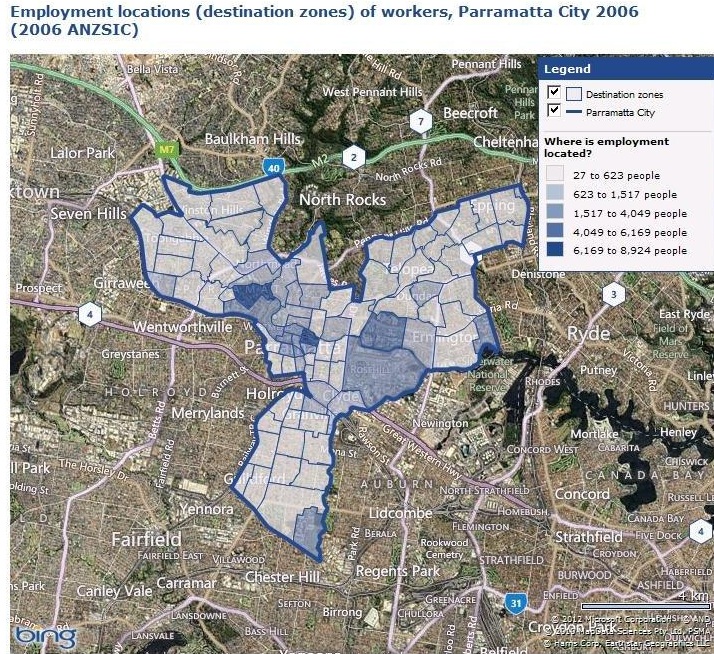Parramatta was Australia’s first inland European settlement, and is often referred to as Sydney’s second CBD. While you could also make this claim for a few other areas in Sydney, the data shows that the City of Parramatta does have the largest employment of any Local Government Area (LGA) in Greater Sydney, outside the City of Sydney itself. In 2006 it had the 8th largest working population of any LGA in Australia, after the 5 capital city LGAs, Gold Coast and Canberra. What else can we learn about this powerhouse economy in Western Sydney?
.jpg?width=300&height=200&name=parramatta%20(1).jpg)
The City of Parramatta have just added economy.id to their suite of .id tools, becoming the 45th council in Australia to sign up to the wealth of economic and workforce data that economy.id provides. . economy.id will help council and businesses in the area to understand the economic trends at work and the characteristics of the local workforce and labour pool.
So what does economy.id show about Parramatta?
How big is the Parramatta economy?
Well, firstly, it is a $12.1 billion economy, which has grown by 38% in the past 10 years, but with only minimal growth in the last 3 years, due to the GFC and economic slowdown in NSW. Parramatta’s economic output represents about 5% of the Greater Sydney economy.
While the growth of industry in the area has plateaued, residential growth has climbed steadily, fuelled by major apartment developments in central Parramatta, and it actually had the second-fastest growing population in NSW in 2009-10. The population has increased by an estimated 18,000 people in 4 years since 2006, many of them students and young professionals working outside the area. So at present the residential economy of Parramatta is growing faster than the locally generated industry as the chart below shows.
Nevertheless, Parramatta remains an economic powerhouse, and the epicentre of Western Sydney’s employment. In 2010-11, the modelling shows that a total of 120,000 people worked in the City of Parramatta, up by about 9,000 since 2006 (note that the Census only recorded 88,800 people as working in Parramatta – Census employment counts significantly under-represent local employment. Read this article to see why.)
What is driving the economy?
The largest employer is Health Care and Social Assistance, with 21,900 employees, and strong growth of over 4,000 people in the last 5 years. This is one of the largest Health Care employment figures in Australia and is driven by the Westmead and Children’s Hospitals, and the large medical precinct surrounding them. Another large employer is Public Administration and Safety, with 13,200 people in 2010-11. Parramatta contains the headquarters for several large public sector organisations, such as the NSW Police and Sydney Water. Despite having the busiest shopping centre in Australia (Westfield Parramatta) there is actually a lower proportion of Retail Trade workers than the Sydney average (not exactly small though, at 10,100 people).
However, in value-add terms, the largest industry is Financial and Insurance Services, worth nearly $3b to Parramatta’s economy in 2010-11.
Where do the workers come from?
Analysis of Journey to Work data included in economy.id shows that Parramatta really is the centre of Western Sydney in employment terms. No less than 29 LGAs contributed at least 500 workers to industries located in Parramatta. Apart from Parramatta itself, where only 18% of the workforce resided, workers came from Blacktown, The Hills, Holroyd, Penrith, Fairfield and Hornsby, as well as a multitude of other areas to work in Parramatta.

Where do the resident’s work?
In contrast, Parramatta’s residents (a rapidly growing number) are most likely to work outside the area. The level of self-containment in Parramatta in 2006 was only 24.9%, so more then three-quarters of residents left the area to work. Commuting to the City of Sydney was the most popular, but nearby areas such as Ryde and Auburn also feature prominently as work destinations.
What are the characteristics of the workforce?
economy.id also contains a wealth of information about the characteristics of workers in the area, derived from Census 2006. Parramatta’s workers are slightly older than the Sydney average, more likely to be middle income and work a 35-40 hour week. Despite the fact that it is a public transport hub there is less train and bus use to get to work in Parramatta than the Sydney average. This is probably because the employment in Parramatta is actually pretty dispersed. While the Parramatta CBD comprises about 34% of the working population (and an increasingly large share of residential population), there are other major industrial and service hubs such as Westmead Hospital (12%) and Rydalmere (8%) – see map below.

How will this information help with economic development?
The City of Parramatta plan to use economy.id to help them understand the economic trends at work within the local area, and also promote the area to new businesses. With transport and business infrastructure already in place, and access to a labour pool of more than 800,000 people, the City is well placed to attract new industries to the area and grow their economy.
To see the full list of economy.id clients, please refer to .id’s client list. Also on our website, you will find more information on economy.id. To arrange a presentation at your council, please email info@id.com.au.

.jpg?width=300&height=200&name=parramatta%20(1).jpg)










